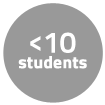-

-
Courses
Find courses by:
Collections
Cross-Disciplinary Topic Lists
- About
- Donate
- Featured Sites
This Course at MIT pages provide context for how the course materials published on OCW were used at MIT. They are part of the OCW Educator initiative, which seeks to enhance the value of OCW for educators.
This page focuses on the course 21F.346 Topics in Modern French Literature and Culture: North America Through French Eyes Professor Bruno Perreau in Spring 2014.
This course is a close study of history and criticism of French literature, focusing on a specific group of writers, a movement, a theme, a critical or theoretical issue, or an analytic approach.
Gain an in-depth understanding of France’s interest in and ambivalent relationship with North American cultures since the eighteenth century using materials drawn from literature, cinema, comics, TV shows, and political debates to explore various themes.
One intermediate subject in French.
HASS-H ![]() course
course
This course is taught during both spring and fall semesters, and can be repeated for credit with permission of the instructor.
The students' grades were based on the following activities:
 30% One oral presentation
30% One oral presentation 20% Weekly short-answer papers
20% Weekly short-answer papers 40% Individual research paper
40% Individual research paper 10% Class participation
10% Class participation
Demographics for this course vary depending on year and schedule.
Students who take the course usually have four main profiles:
During an average week, students were expected to spend 12 hours on the course, roughly divided as follows:
Students prepared readings, oral presentations, weekly papers, and an individual research paper.
| WEEK | M | T | W | Th | F |
|---|---|---|---|---|---|
| 1 |  |  |  |  |  |
| 2 |  |  |  |  |  |
| 3 |  |  |  |  |  |
| 4 |  |  |  |  |  |
| 5 |  |  |  |  |  |
| 6 |  |  |  |  |  |
| 7 |  |  |  |  |  |
| 8 |  |  |  |  |  |
| 9 |  |  |  |  |  |
| 10 |  |  |  |  |  |
| 11 |  |  |  |  |  |
| 12 |  |  |  |  |  |
| 13 |  |  |  |  |  |
| 14 |  |  |  |  |  |
| 15 |  |  |  |  |  |
| 16 |  |  |  |  |  |
 No classes throughout MIT
No classes throughout MIT Class session
Class session No class session scheduled
No class session scheduled Assignment due date
Assignment due dateBelow, Prof. Perreau describes some aspects of the course.
The main challenge for the students and for the instructor in this course is the apparent easiness of the materials. Contrary to other classes where texts are mostly about France, most texts in this class analyze American history and cultural norms. Students thus feel immediately comfortable. However, this requires even more critical thinking for deconstructing categories which seems in the first instance so familiar. The course thus implies a high level of reflexivity. If not, students risk seeing only cultural stereotypes in the transatlantic looking-glass.